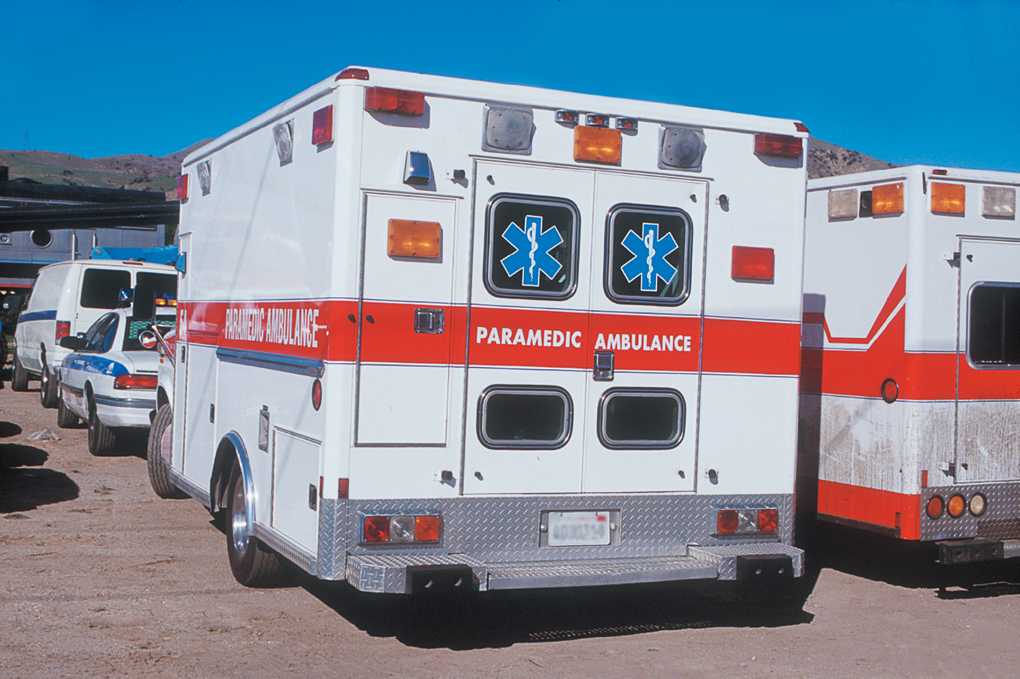KINGWOOD — In the last decade, more than 70 ambulance services have closed across the state, according to the State Office of EMS.
Chris Hall, executive director of the West Virginia EMS Coalition, said those figures are caused in part by a decrease in the number of people volunteering in the field.
Preston County is no exception. In 2014, Valley Ambulance closed its doors. At the most recent county commission meeting, Mountaineer Ambulance said it too is experiencing problems.
Preston’s eight ambulance services were started and originally staffed by volunteers. Four of the six remaining now have paid or partially paid squads.
That mirrors the state, Hall said.
“Most of the squads have converted over to paid staff and some of the volunteer agencies have some kind of a partially paid staff in order to make sure that your ambulances are staffed,” he said.
Finding volunteers is an issue, Hall and Preston County 911 said.
“Across the country, people have too many other things to occupy their time,” Hall said. And time requirements and monetary requirements for training are significant.
A paramedic certification is basically an associate’s degree, Hall noted. Nationally, many choose to enter the field as paid professionals, after all the time and expense devoted to getting certified, rather than volunteer, he said.
Preston County Commissioner Dave Price, who helped start one the county’s services, said training now is the same for volunteer and professional EMS and firefighters.
Paying the bills
Funding is an issue, Hall noted. State code 7-15-4 says it is the duty of county commissions to make EMS available.
“But there’s a clause that says basically only to the degree they can afford it,” Hall said. “So the amount of support counties provide to EMS varies greatly across the state.”
Some counties have an ambulance fee or levy, or have the cash to provide support directly. Preston provides nothing, though the commission has offered help with training costs in the past.
That leaves EMS dependent on fundraising and fees paid by Medicaid, Medicare and insurances for services. Many services hire a billing agency to navigate all the paperwork in claims, which seldom cover the full costs.
County contributions are not usually enough to fund the entire service, Hall noted. That includes personnel, equipment, utilities and other expenses.
“It’s a little bit different than a lot of other health care providers that have set hours of service and you see people at certain hours. You have to have EMS equipment and personnel in most cases available 24/7,” Hall said.
In June, the coalition wrote state delegates and senators, noting that while financial difficulties of hospitals have been addressed by government, “ overlooked in these discussions is the critical financial condition of many emergency medical services agencies.”
It asked the representatives to reconsider the state’s long-term funding strategies for EMS and to consider CARES Act funds for EMS. Other suggestions included using some of the Medicaid surplus to help EMS, and waiving license fees and turnpike tolls.
Virginia, for example, adds $4 per year to vehicle registration fees to fund EMS. Pennsylvania has a $10 EMS fee on traffic violations. Ohio funds a grant program with seat belt fines.
County commissioner associations have always “strongly opposed” changing the law to require counties to support EMS, Hall said. And he understands that, because of the limited tax dollars.
So far people still have access to EMS despite the squad closures, Hall said. But not perhaps the access they once had. And he expects more squads to shut down.
“I wouldn’t say that there’s any areas that are unserved, but what you have is you have longer response times,” Hall said. “And that becomes a policy decision that county commissions and local residents have to make is, to what degree are they willing to fund the availability of EMS in their county?”
TWEET@DominionPostWV




